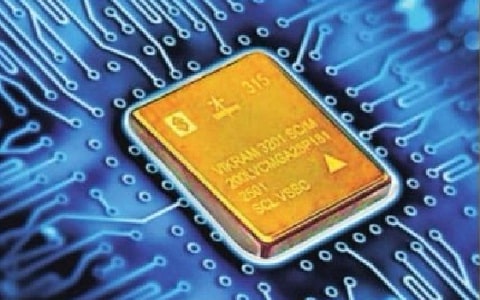In a significant stride towards technological self-reliance, India has unveiled its first fully indigenous 32-bit microprocessor, the Vikram 3201. Developed by the Indian Space Research Organization (ISRO) and its Semiconductor Laboratory (SCL) in Chandigarh, this processor is tailored for the demanding environments of space missions, launch vehicles, and other high-reliability applications.
Table of Contents
1. Introduction
2. Development and Fabrication
3. Architectural Overview
4. Key Features and Capabilities
5. Real-Time Applications
6. Strategic Significance
7. Conclusion
1. Vikram 32 Introduction
The Vikram 3201 microprocessor represents a monumental achievement in India’s journey towards semiconductor self-sufficiency. Named after Dr. Vikram Sarabhai, the father of the Indian space program, this processor is designed to meet the rigorous demands of space missions, including satellite operations and launch vehicle avionics. Its development underscores India’s commitment to advancing its technological capabilities and reducing dependency on foreign semiconductor technologies.

Vikram 32
2. Development and Fabrication
The Vikram 3201 was developed by ISRO’s Semiconductor Laboratory (SCL) in Chandigarh, utilizing a 180nm CMOS process. This fabrication choice aligns with international practices, where slightly older nodes are preferred for their radiation resilience, crucial for space applications. The processor has been flight-validated during ISRO’s PSLV-C60 mission, demonstrating its reliability in actual space conditions.
3. Vikram 32 Architectural Overview
Processor Core
The Vikram 3201 features a 32-bit Reduced Instruction Set Computing (RISC) core, optimized for deterministic real-time performance. This architecture ensures efficient execution of instructions, crucial for the precise operations required in space missions.
Registers and Pipeline
The processor is equipped with 32 general-purpose 32-bit registers and operates on a 5-stage pipeline (Fetch, Decode, Execute, Memory, Write-back). This design enhances processing speed and efficiency, enabling swift data handling essential for real-time applications.
Instruction Set and Programming Support
Vikram 3201 employs a custom instruction set architecture (ISA) developed by ISRO. It supports programming languages like Ada, commonly used in safety-critical aerospace systems, with a C compiler currently under development. The processor also supports floating-point operations, facilitating complex mathematical computations necessary for navigation and control systems.
4. Key Features and Capabilities
- Environmental Resilience: Operates reliably in temperatures ranging from -55°C to +125°C, ensuring functionality in the extreme conditions of space.
- Built-in Testability: Incorporates features like scan and functional modes for self-diagnosis, enhancing maintenance and reliability.
- Communication Interfaces: Equipped with two on-chip 1553B bus interfaces, facilitating robust communication in aerospace applications.
- Power Supply: Operates on a single 3.3V supply, optimizing power consumption for space-constrained environments.
5. Vikram 32 Real-Time Applications
Space Missions
The primary application of the Vikram 3201 is in space missions, where it serves as the central processing unit for launch vehicle avionics and satellite systems. Its resilience to radiation and extreme temperatures ensures reliable performance in the harsh environment of space.
Defense Systems
Beyond space applications, the Vikram 3201 is suitable for defense systems requiring high reliability and real-time processing capabilities. Its robust design makes it ideal for secure communication and control systems in defense applications.
Aerospace Technologies
In the aerospace sector, the processor can be utilized in avionics and guidance systems, where precise computations and reliability are paramount. Its compatibility with the Ada programming language aligns with the industry’s standards for safety-critical systems.
Automotive and Energy Sectors
The Vikram 3201’s capabilities extend to the automotive and energy sectors, where advanced control solutions are required. Its real-time processing power can enhance the performance and reliability of systems in these industries.
6. Strategic Significance
The development of the Vikram 3201 marks a pivotal moment in India’s technological landscape. It signifies the nation’s growing capabilities in semiconductor design and fabrication, reducing dependence on foreign technologies. This advancement not only bolsters India’s position in the global semiconductor value chain but also enhances its strategic autonomy in critical sectors like space, defense, and aerospace.
Please refer to this link for Vikram 3201 vs RAD750, RAD5545, and ESA Processors.
7. Conclusion
The Vikram 3201 microprocessor exemplifies India’s commitment to technological innovation and self-reliance. Its indigenous development and successful deployment in space missions underscore the nation’s growing prowess in semiconductor technology. As India continues to advance in this field, the Vikram 3201 stands as a testament to the nation’s capabilities and aspirations in the global technological arena.